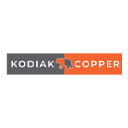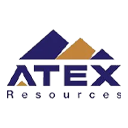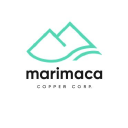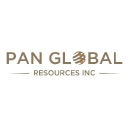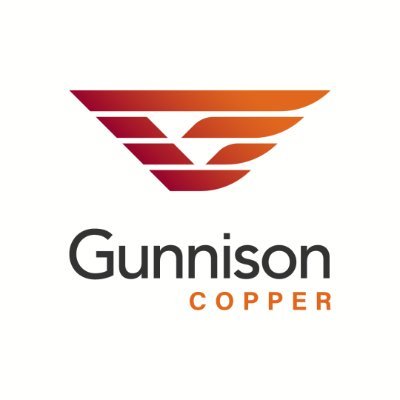Copper Premium as 50% Tariff Disrupts Global Trading Mechanisms

Copper market disrupted by 50% US tariff creating 25% price premium. Structural demand growth 40% by 2035 from EVs/renewables favors Tier-1 jurisdiction miners.
- Policy-driven market disruption has fundamentally altered global copper trading patterns, with new tariff measures creating unprecedented price premiums and supply chain reconfigurations that signal a permanent shift toward resource nationalism rather than temporary trade disputes.
- Structural demand growth anchored to electrification trends projects copper consumption will increase by approximately 40% through 2035, driven by renewable energy infrastructure, electric vehicle adoption requiring four times the copper content of traditional vehicles, and expanding data center requirements from artificial intelligence applications.
- Jurisdictional arbitrage is accelerating institutional investor rotation toward politically stable mining jurisdictions, with regulatory frameworks, infrastructure access, and established permitting processes creating distinct valuation tiers based on geopolitical risk assessments.
- Multiple projects across the development spectrum are advancing toward production milestones, from resource drilling campaigns and feasibility studies to plant start-ups and first copper sales, providing near-term catalysts and demonstrating the industry's ability to respond to current market conditions.
- Investment flows are prioritizing operational excellence and capital efficiency, with companies demonstrating low all-in sustaining costs, proven management teams, and strategic partnerships gaining premium access to development financing and institutional capital allocation.
The copper market has been fundamentally altered by President Trump's 50% tariff on imported copper, classified as a Section 232 national security measure. This policy intervention has created immediate and dramatic market effects, with Comex copper futures surging to an intraday high of $5.90 per pound, representing a 17% single-day gain that obliterated previous resistance levels.
The most striking development has been the emergence of a record 25% premium of COMEX futures over LME benchmarks, fundamentally disrupting the normal arbitrage mechanisms that typically keep global copper prices aligned. This pricing dislocation reflects not just immediate supply concerns, but a broader reconfiguration of how copper flows through international markets.
The magnitude of the proposed tariff signals a structural shift toward resource nationalism that could permanently alter copper trading patterns. The US relies on imports for 36% of its copper demand, with Chile, Canada, and Mexico as key suppliers, placing Chile at the greatest exposure to the policy change.
Structural Demand Underpins Long-Term Growth
Beyond immediate policy volatility, copper demand is anchored to irreversible electrification trends. The International Energy Agency and Wood Mackenzie project global copper demand will increase by approximately 40% through 2035, driven primarily by renewable energy infrastructure, electric vehicle adoption, and grid modernization requirements.
Electric vehicles require approximately four times the copper content of internal combustion vehicles, while offshore wind installations demand significantly more copper per megawatt than traditional power generation. Data centers, whose power requirements continue expanding with artificial intelligence applications, represent another substantial and growing copper consumption category.
The Infrastructure Investment and Jobs Act has allocated substantial funding for grid modernization and EV charging networks, projects that will proceed regardless of copper pricing volatility. This creates a baseline demand floor that supports long-term copper prices even as short-term volatility persists.
Jurisdictional Arbitrage Favors Stable Jurisdictions
The tariff announcement has accelerated institutional investor rotation toward mining assets in jurisdictions offering both political stability and infrastructure advantages. Canada has emerged as a preferred destination given its membership in the United States-Mexico-Canada Agreement and established mining regulatory framework.
Gladiator Metals' 35-kilometer copper belt has been underexplored for decades, with Gladiator representing the first dedicated technical team and funding commitment in 40 years, targeting over 100 million tons at above 1% copper grades. Jason Bontempo, CEO of Gladiator Metals, positions his company's strategic advantages in Canada's Yukon Territory:
"We have excellent highway and road access and trail access. Excellent draw on labor resource and being so close to the city and we can pretty much work all year round."
Canada's regulatory environment offers additional advantages through established Indigenous consultation processes and environmental assessment frameworks. Gladiator has already secured a Capacity Funding Agreement with the Kwanlin Dün First Nation, demonstrating proactive community engagement that reduces permitting risk.
Similarly, Pan Global Resources' Spanish operations provide direct access to European decarbonization markets while avoiding geopolitical complexities. Spain's European Union membership ensures regulatory alignment with critical materials legislation and renewable energy mandates, while the country's established mining history and infrastructure reduce development risk compared to greenfield jurisdictions.
Production Catalysts Across Multiple Projects
Several copper projects are advancing rapidly on resource expansions all the way towards production, providing near-term catalysts for investor returns.
Gunnison Copper has announced the start-up of its solvent extraction plant and electrowinning circuit at the Johnson Camp Mine in Arizona, with first copper sales expected in September 2025. Robert Winton, SVP Operations at Gunnison, stated:
"With the start-up of the SX-EW plant ahead of schedule we have achieved another major step towards our targeted copper cathode sales in September this year. The dedicated team at Johnson Camp has executed this startup without incident and in record time, preparing for our first harvest of Made-in-America copper to be sold in Q3 this year."
The Johnson Camp project benefits from full funding by Nuton LLC, a Rio Tinto venture, with production capacity of up to 25 million pounds of finished copper cathode annually. This removes financing risk while providing exposure to advanced copper processing technology.
Kodiak Copper has filed its initial Mineral Resource Estimate for four of seven mineralized zones at the MPD copper-gold project in British Columbia. The estimate includes Indicated Mineral Resources of 56.4 million tonnes grading 0.42% copper equivalent for 385 million pounds of copper and 0.25 million ounces of gold, plus Inferred Mineral Resources of 240.7 million tonnes grading 0.33% copper equivalent.
Kavango Resources' operational strategy centers on rapid deployment of processing infrastructure to capture current commodity price strength. The company commenced the resource drilling at the Bill's Luck Gold Mine on the Hillside Project in Zimbabwe.
CEO Ben Turney stated, highlighting the direct connection between resource drilling results and infrastructure investment decisions.
"A successful campaign will underpin the investment case for the placement of the 200tpd production plant at Bill's Luck, as we work to scale up to a 250tpd gold production operation by the first half of 2026."
Exploration Success Drives Discovery Value
ATEX Resources completed its Phase V drill programme, achieving 16,600 metres of diamond drilling at the Valeriano Project in Chile while saving 9,200 metres through innovative directional drilling technology. Ben Pullinger, President and CEO of ATEX, commented:
"The results from our Phase V drill program represent the best we've ever seen at Valeriano, delivering exceptional copper and gold grades and confirming the scale and continuity of the system."
Axo Copper has reported high-grade surface discoveries at La Huerta South, approximately 3km from the main Las Marias workings. Jonathan Egilo, President and CEO, stated:
"These new high-grade samples at surface provide further evidence driving our thesis that La Huerta could contain multiple high-grade copper structures, beyond the main La Huerta Trend that hosts Las Marias. Additional work is underway to make this a drill-ready target, and we expect to test La Huerta South with initial drilling in the back end of Q3/24."
Ongoing exploration programs continue to generate discovery value across multiple projects. Gladiator Metals announced the discovery of a new mineralization zone at its Cowley Park project, with the first drill hole targeting depth extension below 200m encountering previously unobserved disseminated bornite and chalcopyrite within a 180m wide zone.
CEO Jason Bontempo commented:
"Gladiator's first drill hole targeting mineralisation below 200m at Cowley Park highlights the significant upside potential of the deposit which has still only been explored at relatively shallow levels. Significantly a new style of mineralisation was observed with disseminated bornite observed over more than 180m within the granodiorite, outside of the skarn."
Capital Market Response
The copper tariff announcement triggered immediate outperformance among copper equities, with many companies recording double-digit gains in the days following Trump's announcement. This equity market response reflects both direct leverage to copper pricing and recognition that policy-driven supply constraints could benefit domestic and allied production sources.
ATEX Resources strengthened its financial position generating CAD$9.75 million in proceeds. The warrant exercises were completed by existing long-term core shareholders, demonstrating strong insider confidence in project prospects. In an environment of policy-driven price volatility, mining companies with robust cost structures and capital-efficient development pathways hold significant advantages.
All-in sustaining costs and capital intensity metrics have gained greater prominence as investors seek projects capable of generating positive returns across various price scenarios.
Hayden Locke, CEO of Marimaca Copper, highlights his project's strategic positioning:
"Marimaca has the potential to be a low capital intensity, high margin, copper company with heap leaching processes that are 38% less carbon intensive than traditional processing while utilizing recycled seawater supply that avoids fresh water consumption."
The company is nearing completion of its Definitive Feasibility Study, with 86% of total resource tonnes now classified in measured and indicated categories. This advanced technical status positions the project to capitalize on copper price strength while maintaining operational flexibility if market conditions change.
The Investment Thesis for Copper
- Embrace Policy-Driven Supply Constraints: Target companies in Tier-1 jurisdictions (Canada, Australia, select EU countries) that benefit from trade policy disruptions while avoiding exposure to potential retaliatory measures
- Focus on Development-Ready Assets: Prioritize investments in projects with completed feasibility studies, established infrastructure access, and clear pathways to production within 2-3 years to capitalize on current price strength
- Diversify Across the Value Chain: Balance exposure between near-term producers, development-stage projects, and exploration companies to capture different risk-return profiles as the copper cycle evolves
- Emphasize Operational Excellence: Invest in companies with low all-in sustaining costs, capital-efficient development models, and proven management teams capable of executing in volatile market conditions
- Consider ESG Positioning: Target projects with strong environmental credentials, established community relationships, and sustainable operational practices that align with increasing ESG investment mandates
- Monitor Financing Quality: Focus on companies with strong balance sheets, established partnerships (like Rio Tinto's Nuton), or access to development financing that reduces execution risk
- Geographic Risk Management: Maintain exposure across multiple stable jurisdictions to hedge against country-specific political or regulatory risks while avoiding over-concentration in any single region
The combination of policy volatility and structural demand growth requires careful risk management and strategic positioning. Companies operating in multiple jurisdictions provide natural hedging against geopolitical risks, while those with diversified commodity exposure offer protection against copper price cycles.
The focus on jurisdictional arbitrage has created premium valuations for assets in Canada, Australia, and select South American jurisdictions with established mining codes and infrastructure. Companies with multiple projects across different jurisdictions are positioning themselves as diversified suppliers capable of serving various regional markets. The scale of the proposed copper tariff and its classification as a national security measure suggest this may represent a more permanent shift in trade patterns rather than temporary volatility.
The copper investment landscape has been fundamentally transformed by the intersection of policy-driven supply disruption and accelerating structural demand from the global energy transition. While short-term volatility creates both opportunities and risks, the underlying drivers of copper demand remain firmly anchored to irreversible electrification trends. The most significant opportunities lie with companies that combine favorable jurisdictional positioning, robust operational metrics, and clear pathways to near-term production. As the market evolves toward regional trading blocs and strategic partnerships, investors who position themselves with companies offering operational excellence, jurisdictional advantages, and strategic flexibility will be best positioned to benefit from copper's essential role in the global energy transition.
Analyst's Notes




Subscribe to Our Channel
Stay Informed










